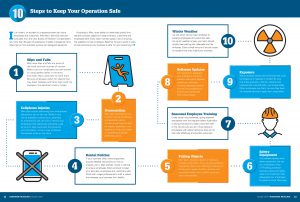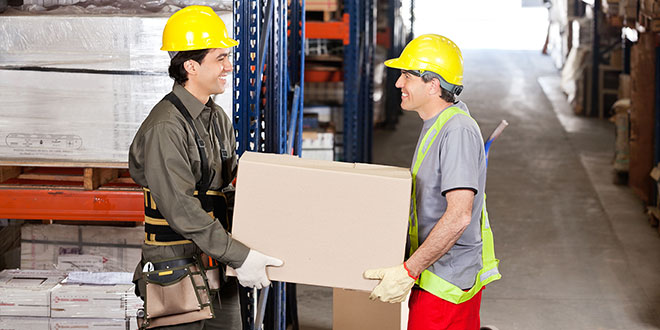
Click the picture to download a PDF of this story.
In an instant, an accident or unexpected event can injure employees and customers. Mike Marr, technical resource consultant from the Ohio Bureau of Workers’ Compensation, has more than 30 years of experience in safety management and offers tips on how business owners can safeguard operations.
According to Marr, store safety is a teamwide priority that requires constant vigilance to keep inventory, customers and employees safe. Every team member plays a role in ensuring the salesfloor is free of dangers. Read his 10 tips to avoid in-store injuries and ensure your business is safe, fun and welcoming.
1. Slips and Falls
Marr says slips and falls are some of the most common sources of injuries. Make sure your employees are well-trained on using ladders safely in the store, and never allow customers to climb them. Be sure employees watch for objects that may block hallways and items that could trip shoppers, like electrical cords or hoses.
2. Overexertion
Marr says overexertion is a common source of workers’ compensation claims. Provide ample opportunities for breaks, especially in hot weather or when your team is completing physically demanding work.
3. Cellphone Injuries
Marr says injuries stemming from smartphone distractions are on the rise. While it may not be possible to police your customers on smartphone use, be sure to remind your employees that cellphones should be used as tools to help customers find products and information, not as a way to distract themselves while on the clock.
4. Rental Policies
If your business offers rental equipment, provide detailed instructions on how to properly use it, Marr advises. Invest in training to ensure employees follow protocol to keep your business, employees and customers safe. Work with a legal professional to craft a waiver that releases your business from liability.
5. Falling Objects
Marr says unsteady objects or insecure storage could lead to injury-causing accidents. Frequently check your shelving to ensure it’s sturdy and in good condition, and be sure everyone knows how to safely stock and store merchandise.
6. Safety Equipment
You probably already stock safety equipment, but are your employees using it? Providing protective eyewear, gloves and safety vests is an investment that safeguards your employees for years to come, Marr says.
7. Seasonal Employee Training
Under certain circumstances, giving seasonal employees work that requires safety supervision or giving instructions to keep customers safe is fine. But be sure you arm those seasonal employees with safety training so they can do their jobs effectively and protect customers.
8. Software Updates
It’s important to safeguard your business’s computer systems. Be sure to regularly update your software, including operating systems and anti-virus programs, to ensure you’re protected from online threats.
9. Exposure
Many hardware stores have chemicals that could be dangerous if ingested or inhaled. Be sure that these products—chlorine, solvents and hardware like nuts and bolts—are stored safely. When employees use them, be sure they have the required training to apply them responsibly.
10. Winter Weather
Ice and snow can be major obstacles to keeping employees and customers safe. As winter weather arrives, your team should quickly clear parking lots, sidewalks and the entryway. Even a small amount of ice can cause an accident that may imperil your business.
 Hardware Retailing The Industry's Source for Insights and Information
Hardware Retailing The Industry's Source for Insights and Information






